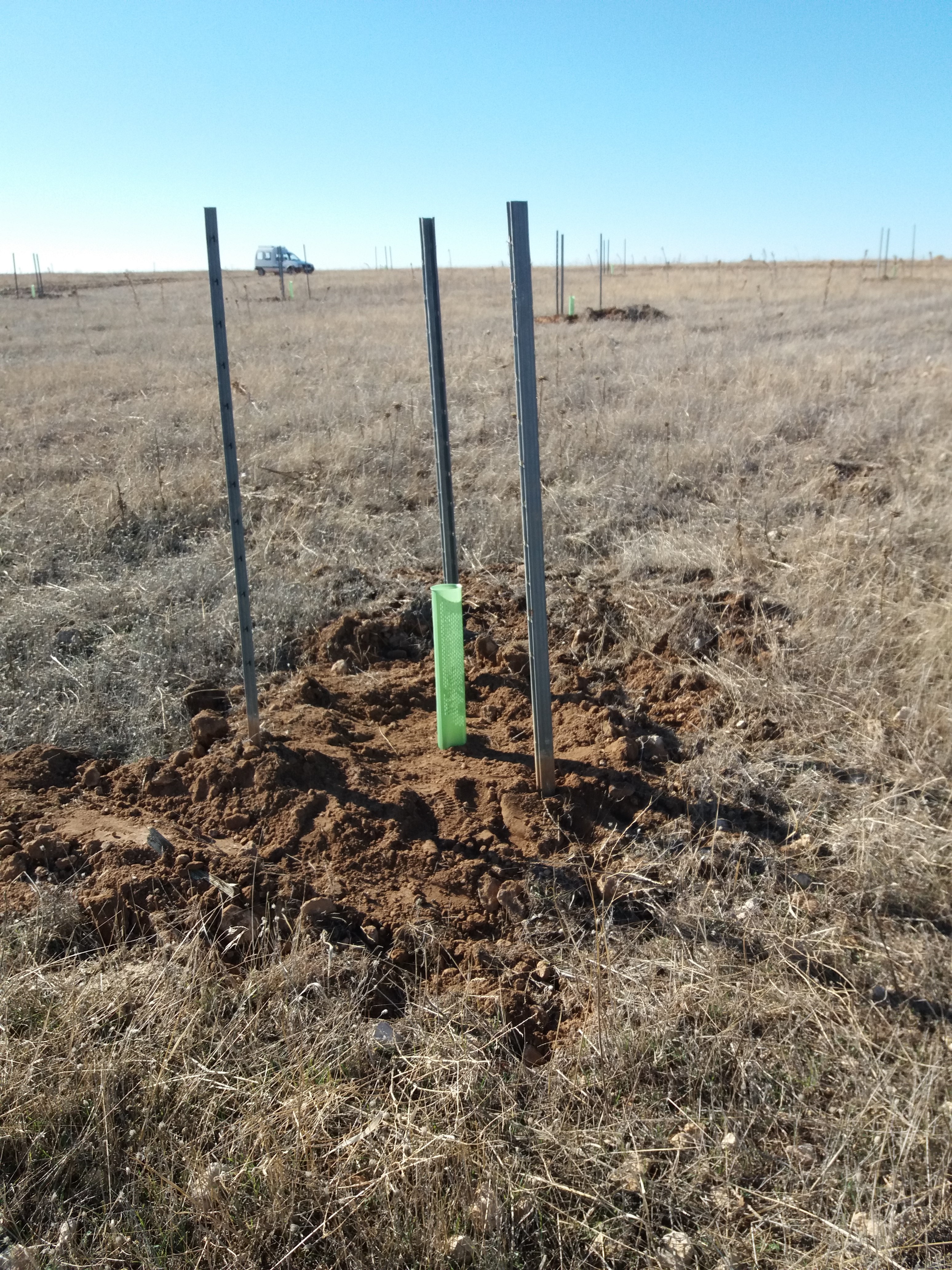Given the thermopluviometric and edaphic characteristics of the area, as well as the altitude and latitude of the location, the study area falls within the Meso-Mediterranean bioclimatic zone, represented by the series of basophilic Meso-Mediterranean vegetation of the holm oak groves, with Quercus ilex subsp. ballota being the highest representative of the climatic community and therefore the species chosen for afforestation.
This series occupies the largest area, and its mature stage is an oak forest established on soils rich in bases, with rainfall ranging between 350 and 550 mm per year. However, the agricultural transformations in the area have progressively reduced this type of plant formation, leaving only a few very degraded stands and open patches of pastures, which reflect the historical dominance of this series throughout the territory.
For the reforestation tasks in this case, the seedlings came from seeds collected in the National Park itself, in the area known as Quinto de la Torre. These seeds were harvested in autumn 2016 from a 125-ha area within the National Park, with a large number of parent trees, aiming to achieve the greatest genetic diversity and future adaptability of the seedlings to the terrain.
The seeds were later cultivated in nurseries managed by the TRAGSA company, with the plants certified with the MANCHA origin label.
Since the objective of the afforestation was to restore the original dehesa on a limestone substrate that once existed in many areas around the Park, including the selected site prior to its transformation into irrigated land, efforts were made to mimic the tree arrangement found in existing pastures in the area (Zacatena and Casablanca). Ultimately, a random distribution of plants was chosen, with a planting density of about 50 trees/hectare and distances between plants of at least 15 m. As 104 ha were reforested, the total number of plants used in the project amounted to 5,200.
The land had been cultivated up until its acquisition, and it had rested for 11 years, which was significant for the new seedlings as the soil had improved in nutrients, providing them with greater vitality and quality.
The planting was carried out manually by a team of professionals specialized in this type of work. The seedlings were supplied in rigid black trays (50 units), with 250 cm3 alveoli filled with organic substrate, primarily peat based.
The seedlings were in good condition throughout, showing no signs of injury, malformation, leaf spots, or other apparent damage. They all exhibited good consistency, turgidity, liveliness, and healthy leaf size.
The land preparation involved mechanized digging using a backhoe to create 90x90x90 cm holes, with no other areas of the plot being cleared. Afterward, the removed soil was levelled to avoid leaving mounds that could hinder proper planting or the installation of protective fencing.
Next, enough soil was excavated and loosened to ensure the plant could be easily placed so that the root ball was properly buried, followed by the installation of a biodegradable protective tube 60 cm high.
The size of the hole, somewhat larger than usual, facilitated the placement of three posts to anchor the individual protective mesh around each plant, preventing damage from wildlife or livestock.
Additionally, the increased depth of the work improves water availability for the plant, which is crucial in a region with low rainfall like La Mancha.
Finally, the surrounding soil was compacted to ensure that the removed soil made contact with the root ball, preventing air pockets that could hinder rooting. A tree pit was also constructed to increase the capacity to collect and retain rainwater, which is essential in regions where rainfall is typically scarce, such as La Mancha.



